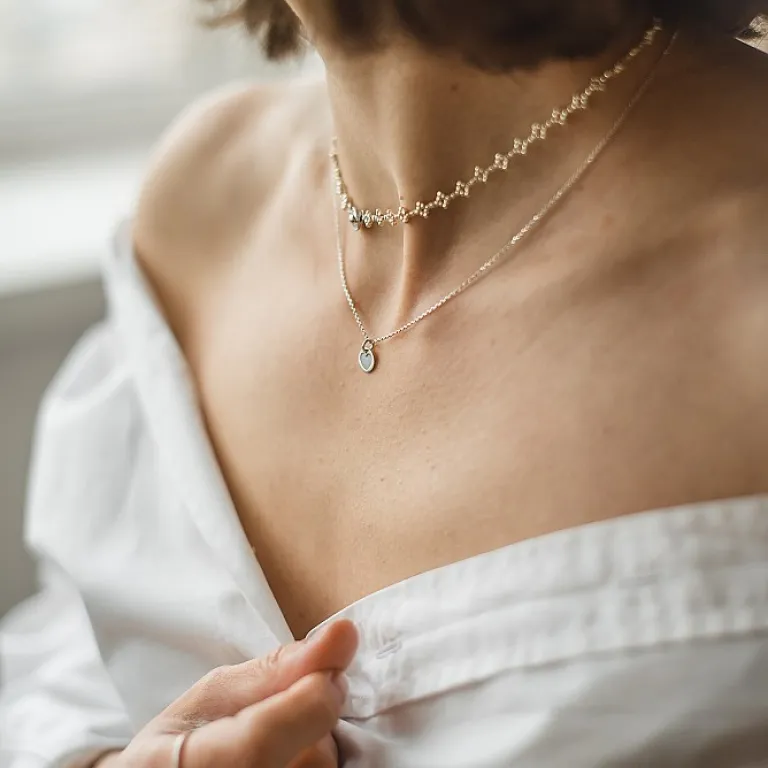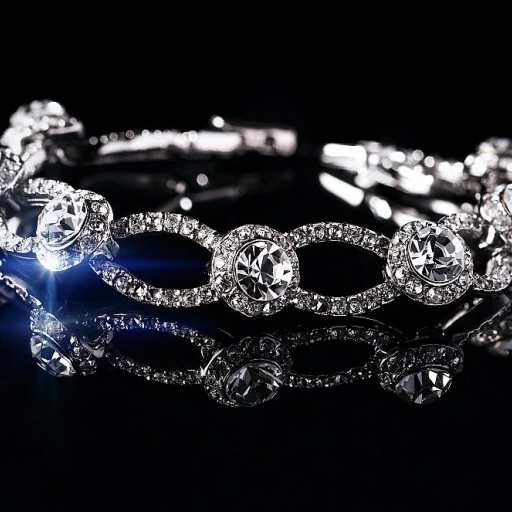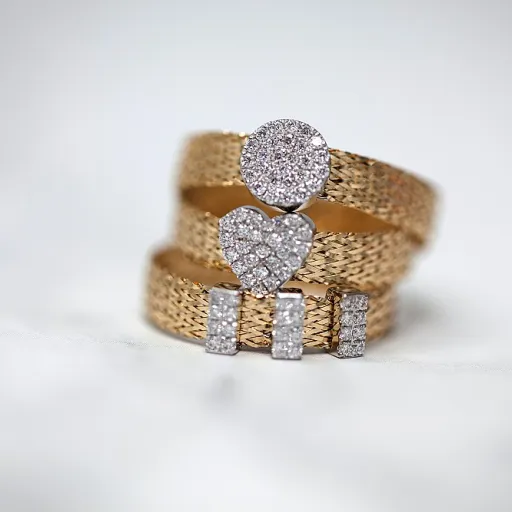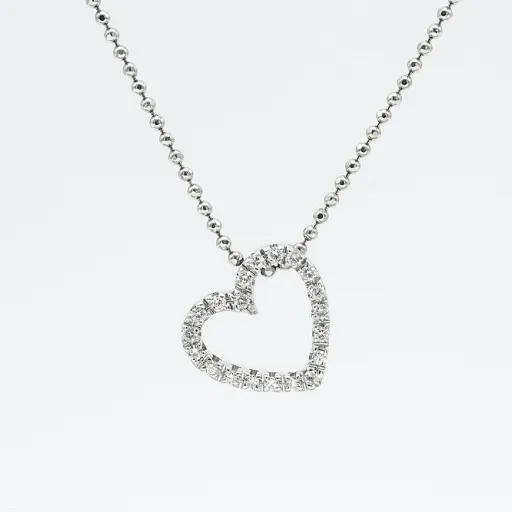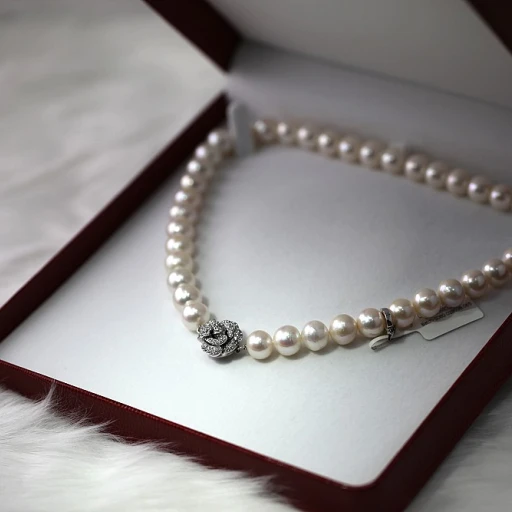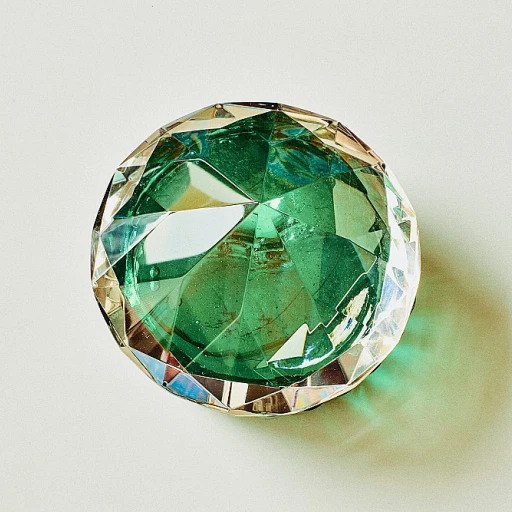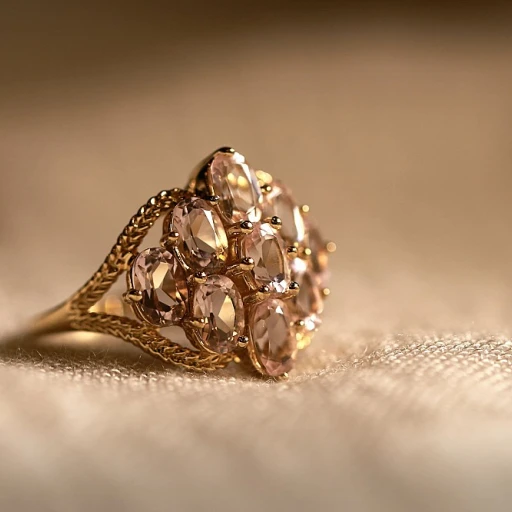
What makes gold plated white gold unique
The Distinctive Appeal of Gold Plated White Gold
Gold plated white gold stands out in the world of fine jewelry for its unique blend of luxury, versatility, and affordability. This type of jewelry combines a base metal—often sterling silver or another durable alloy—with a layer of white gold, and frequently, a final rhodium plating. The result is a piece that mirrors the brilliance and sophistication of solid white gold, yet is more accessible for a wider range of jewelry lovers.
What makes these pieces so captivating is the interplay between the underlying metal and the precious layers above. Rhodium plating, for example, is commonly applied to enhance the reflective white finish and protect the gold layer beneath. This process is especially popular for rings, earrings, and pendant necklaces, where a bright, mirror-like shine is highly desired. The presence of rhodium also adds a level of durability, helping to resist tarnish and scratches that can occur with daily wear.
- Visual Versatility: Gold plated white gold jewelry can mimic the look of platinum or silver, making it a favorite for those who appreciate a modern, clean aesthetic. Whether you prefer hoop earrings, a diamond pendant, or a statement ring, the white gold finish offers a timeless elegance.
- Affordability: Compared to solid gold or platinum, gold plated pieces offer a more budget-friendly way to enjoy the look and feel of luxury jewelry.
- Range of Styles: From classic yellow gold and rose gold accents to contemporary white gold and rhodium plated designs, there is a wide variety of options for every taste.
It’s important to note that while gold plated white gold jewelry offers many benefits, it also requires thoughtful care and maintenance to preserve its beauty. Owners should be aware of the differences between solid gold, gold plated, and rhodium plated pieces, as each has its own characteristics and care requirements. For those interested in protecting their investment, exploring fine jewelry insurance options can be a wise step.
Understanding these unique qualities sets the stage for appreciating the nuances of gold plated white gold, from common misconceptions to best practices for care and maintenance.
Common misconceptions about gold plated white gold
Debunking Popular Beliefs About Gold Plated White Gold
Gold plated white gold jewelry often sits at the crossroads of luxury and affordability, but several myths persist about its nature and value. Understanding these misconceptions can help owners make informed decisions and care for their pieces more effectively.
- Myth: Gold plated white gold is the same as solid white gold. In reality, gold plated white gold involves a base metal—often sterling silver or another alloy—coated with a thin layer of white gold. This is distinct from solid gold jewelry, which contains gold throughout the entire piece. The plating process can also include a final layer of rhodium plating to enhance the white finish and durability.
- Myth: All gold plated jewelry tarnishes quickly. While it’s true that the plating can wear over time, the longevity of gold plated white gold depends on the thickness of the plating, the quality of the base metal, and how the piece is worn and cared for. Proper maintenance can significantly extend the life of your plated jewelry.
- Myth: Plated white gold cannot look as luxurious as solid gold or platinum. With advancements in plating techniques, gold plated white gold pieces—such as pendant necklaces, hoop earrings, and rings—can achieve a brilliant, high-end look. Rhodium plating, in particular, gives a reflective, bright white finish that rivals more expensive metals.
- Myth: Gold plated white gold only comes in one style. In fact, you’ll find a wide variety of styles, from classic diamond-accented earrings to modern rose gold and yellow gold combinations. Many pieces blend gold white, gold yellow, and gold rose tones for a unique appearance.
For those interested in maximizing the versatility of their jewelry, consider how additional links or creative combinations can enhance your collection. Explore more about enhancing your gold rope anklet with additional links to see how customization can elevate even plated pieces.
Recognizing these common misconceptions is the first step toward appreciating the unique qualities of gold plated white gold jewelry and making the most of your collection.
Challenges faced by owners of gold plated white gold jewelry
Everyday Realities: Durability and Wear
Owners of gold plated white gold jewelry often discover that these pieces require a different approach compared to solid gold or rhodium plated items. The allure of gold white plating lies in its bright, lustrous finish, but this beauty can be fleeting if not cared for properly. The thin layer of gold or rhodium plating over a base metal or sterling silver is susceptible to wear, especially on high-contact pieces like rings, hoop earrings, or pendant necklaces. Over time, friction from daily wear or exposure to chemicals can cause the plating to fade, revealing the underlying metal and altering the piece’s appearance.
Common Issues: Tarnishing, Fading, and Sensitivity
- Tarnishing and Discoloration: Plated jewelry, especially those with a base metal or plated sterling silver core, can tarnish as the plating wears off. This is particularly noticeable in pieces like gold plated earrings or rings that are worn frequently.
- Loss of Luster: The initial shine of gold plated white gold can diminish, especially if the piece is exposed to moisture, perfumes, or lotions. Rhodium plating can help maintain brightness, but it too will eventually wear thin.
- Skin Sensitivity: Some individuals may experience skin reactions if the base metal is exposed, especially with plated jewelry that uses nickel or other alloys beneath the gold or rhodium layer.
Value and Longevity: Managing Expectations
Unlike solid gold or even gold yellow and rose gold pieces, gold plated white gold jewelry is not designed for a lifetime of daily wear. Owners should view these pieces as accessible luxury, ideal for special occasions or as part of a rotating collection. While the initial sale price is attractive, the long-term value is lower compared to solid gold or rhodium plated solid pieces. For those seeking a timeless investment, exploring timeless investment in gold jewelry can offer more enduring satisfaction.
Quick Tips for Owners
- Rotate your gold plated white gold pieces with other jewelry to minimize wear.
- Remove plated jewelry before swimming, showering, or applying lotions and perfumes.
- Store each piece separately to avoid scratches and prolong the life of the plating.
Best practices for maintaining gold plated white gold
Daily Habits to Preserve Your Plated White Gold Jewelry
Gold plated white gold jewelry is admired for its luminous finish and versatility, but its beauty depends on careful maintenance. Unlike solid gold or sterling silver, the thin layer of gold or rhodium plating over a base metal or silver core is more vulnerable to wear. Here are practical steps to help your pieces retain their brilliance and value.
- Avoid contact with chemicals – Everyday products like perfume, hairspray, and cleaning agents can erode the plating. Always put on your earrings, rings, or pendant necklace after applying cosmetics or fragrances.
- Remove jewelry before physical activity – Sweat and friction can accelerate the fading of gold, white, or rose gold plating. Take off your plated jewelry before exercising, swimming, or doing household chores.
- Store pieces separately – To prevent scratches, keep each piece in a soft pouch or lined box. Storing gold plated, rhodium plated, and sterling silver items apart avoids unwanted abrasion between metals.
- Gentle cleaning only – Clean your plated white gold jewelry with a soft, lint-free cloth. Avoid abrasive materials or harsh cleaners, which can strip away the delicate gold or rhodium layer. For diamond or gemstone accents, use a damp cloth and pat dry.
- Rotate your collection – Wearing the same gold plated rings or hoop earrings daily will wear down the plating faster. Alternate your pieces to extend their lifespan.
Protecting the Plating: What to Watch For
Plated jewelry, especially those with white gold or rhodium plating, is sensitive to environmental factors. Exposure to saltwater, chlorine, or even prolonged sunlight can cause discoloration or fading. If you notice your gold yellow or gold white pieces losing their shine, it may be time for professional attention. Regular inspection of clasps, prongs, and settings on items like pendant necklaces or diamond rings can also prevent accidental loss or damage.
When to Seek Expert Help
If your gold plated or rhodium plated jewelry shows significant wear, such as visible base metal or uneven color, consult a trusted jeweler. They can advise if replating or restoration is needed to revive your favorite pieces. Remember, proper care will help your jewelry retain its allure, whether it’s a quick sale find or a cherished heirloom.
How to identify quality in gold plated white gold pieces
Spotting Superior Craftsmanship in Gold Plated White Gold
When evaluating gold plated white gold jewelry, quality is more than just a shiny surface. True value comes from a combination of expert plating, thoughtful design, and durable materials. Here’s what to look for when assessing a piece:- Plating Thickness and Consistency: A high-quality piece will have an even layer of gold plating over the white gold or base metal. Thin or patchy plating can wear quickly, especially on rings or hoop earrings that see frequent use.
- Rhodium Plating: Many fine white gold pieces feature a rhodium plated finish for extra shine and protection. Rhodium plating enhances the white appearance and resists tarnish better than gold alone. Check for a bright, mirror-like finish—this is a sign of recent or quality rhodium plating.
- Base Metal Matters: The underlying metal affects longevity. Plated sterling silver or solid gold bases are preferable to generic base metals, as they offer better durability and value. Always ask about the base metal, especially for pendant necklaces or earrings.
- Secure Settings: For diamond or gemstone pieces, inspect the prongs and settings. Quality jewelry will have well-crafted, secure settings that hold stones firmly, whether in rings, earrings, or necklaces.
- Hallmarks and Stamps: Look for clear markings indicating gold content (like 14K, 18K), white gold, or sterling silver. These stamps are a quick way to verify authenticity and metal type.
- Finish and Detailing: Examine the surface for smoothness and attention to detail. High-end pieces, whether gold yellow, gold rose, or gold white, will have a flawless finish without rough edges or visible seams.
Comparing Gold Plated White Gold to Other Jewelry Types
| Jewelry Type | Plating | Base Metal | Durability |
|---|---|---|---|
| Gold Plated White Gold | Gold, often with rhodium | White gold, sterling silver, or base metal | Moderate (depends on thickness and care) |
| Solid Gold | None | Gold (yellow, white, or rose) | High |
| Gold Plated Sterling Silver | Gold | Sterling silver | Moderate |
| Rhodium Plated Jewelry | Rhodium | White gold or silver | High (for tarnish resistance) |
Quick Tips for Buyers
- Ask for details about the gold plating process and thickness.
- Prefer pieces with rhodium plating for extra durability and shine.
- Inspect the piece in natural light to spot any inconsistencies.
- Choose reputable sellers who provide clear information about the metal and plating.
When to consider professional restoration or replating
Recognizing When Your Jewelry Needs Expert Attention
Even with the best care routines, gold plated white gold jewelry can show signs of wear over time. The thin layer of gold or rhodium plating on pieces like rings, earrings, or a pendant necklace may eventually fade, especially in areas that come into frequent contact with skin or clothing. Here’s how to know when it’s time to seek professional help:- Visible discoloration: If your gold plated jewelry starts revealing the base metal underneath, or if the white gold finish appears yellowed or dull, this is a clear sign that the plating has worn off.
- Loss of luster: Plated white gold and rhodium plated pieces are prized for their shine. When the surface looks flat or patchy, a jeweler can restore its brilliance.
- Uneven wear: High-touch areas, such as the back of hoop earrings or the underside of rings, may lose their plating faster than other parts. This uneven appearance can affect the overall look of your jewelry.
- Allergic reactions: If you start experiencing skin irritation, it could mean the protective layer has thinned, exposing the base metal or sterling silver beneath.
What to Expect from Professional Restoration
A reputable jeweler will assess your gold plated white gold piece and recommend the right approach. Restoration often involves cleaning, reapplying gold, rhodium, or rose gold plating, and polishing the jewelry to revive its original shine. For intricate pieces, such as diamond-accented rings or detailed pendant necklaces, a professional ensures that stones and settings remain secure during the process.Choosing the Right Time for Replating
You don’t have to wait for severe wear before considering replating. If you notice minor fading or want to maintain the appearance of your gold jewelry for a special event or sale, a quick professional touch-up can make a significant difference. Regular assessment by a jeweler, especially for frequently worn pieces, helps preserve the value and beauty of your collection, whether it’s solid gold, gold plated, or sterling silver based.Tips for Selecting a Trusted Jeweler
- Look for specialists with experience in gold, white gold, yellow gold, and rhodium plating.
- Ask about the thickness of the new plating and the type of metal used as a base.
- Request before-and-after photos of similar pieces, such as gold yellow or rose gold rings, to view their work quality.
- Ensure the jeweler uses techniques suitable for your specific jewelry, whether it’s a solid gold piece or plated sterling silver.
